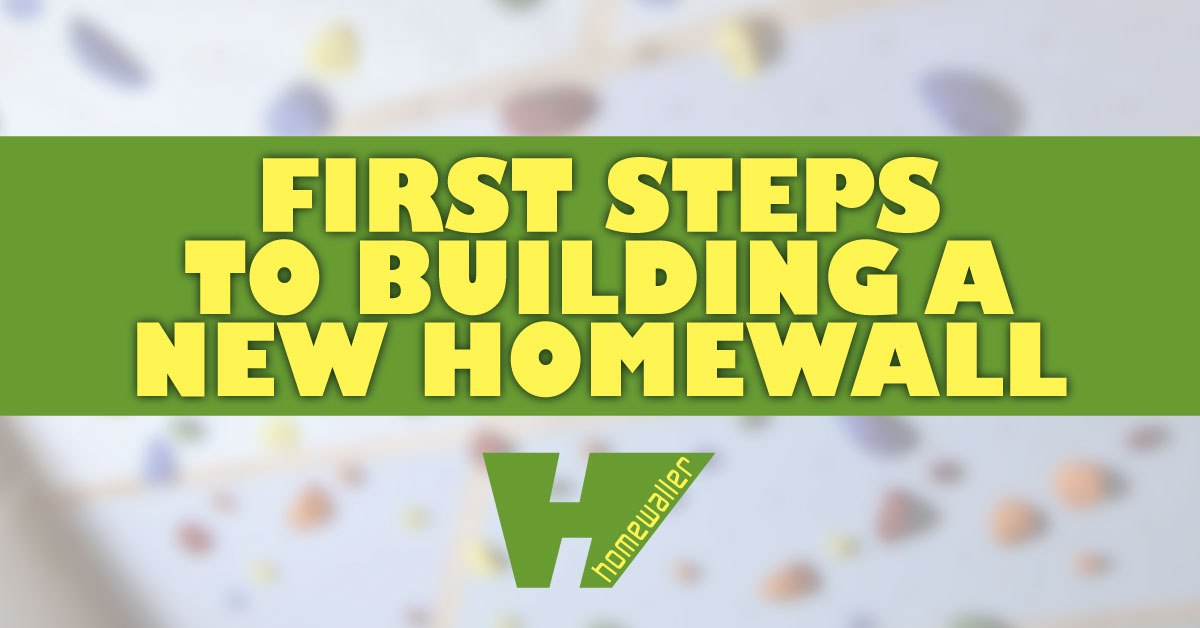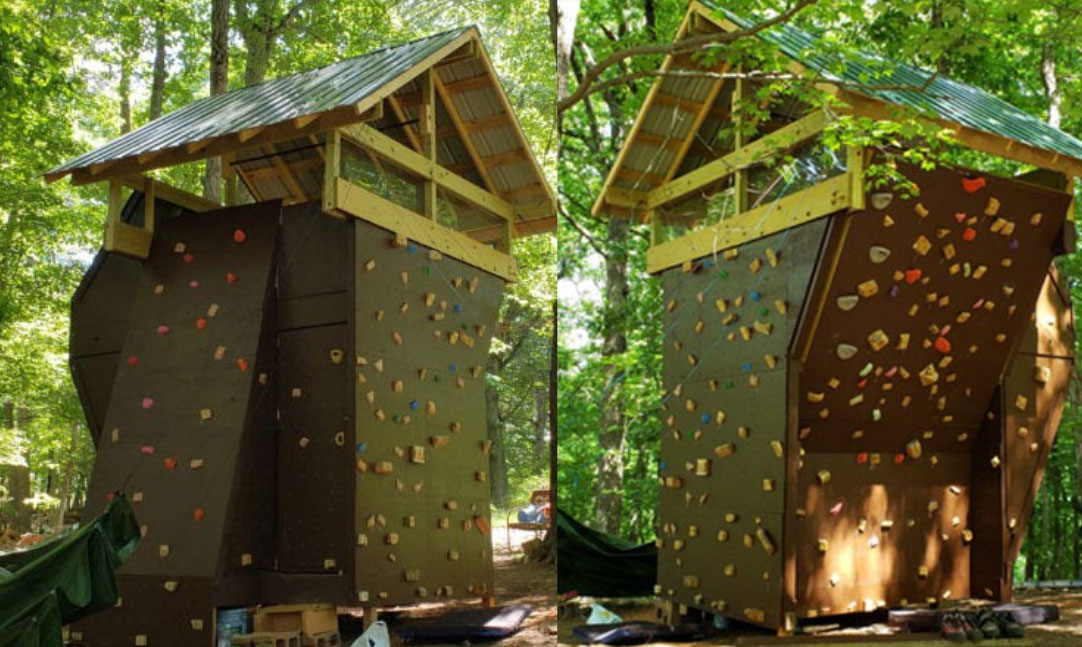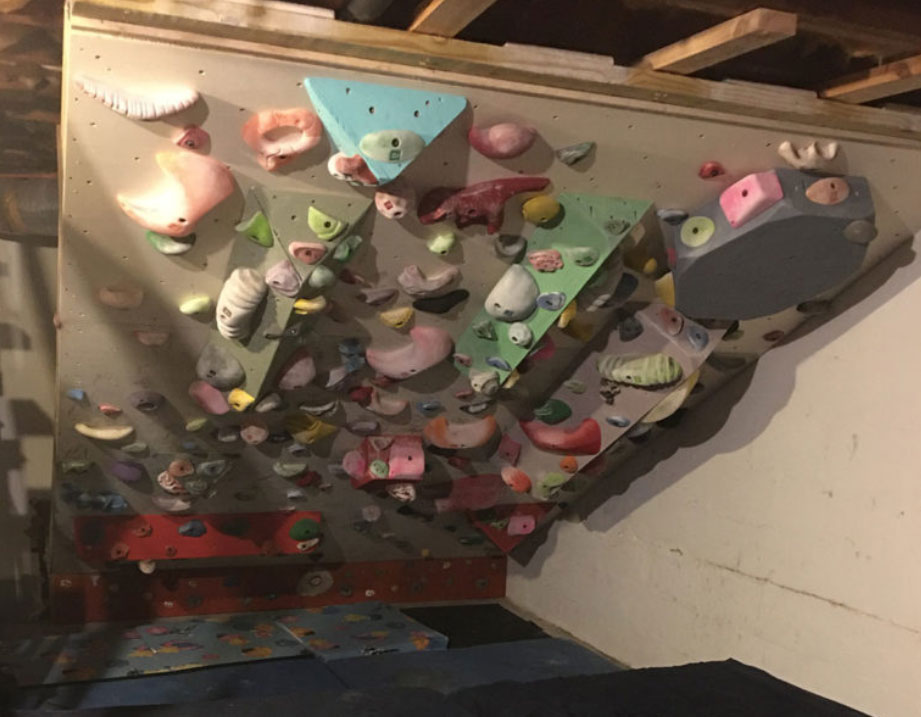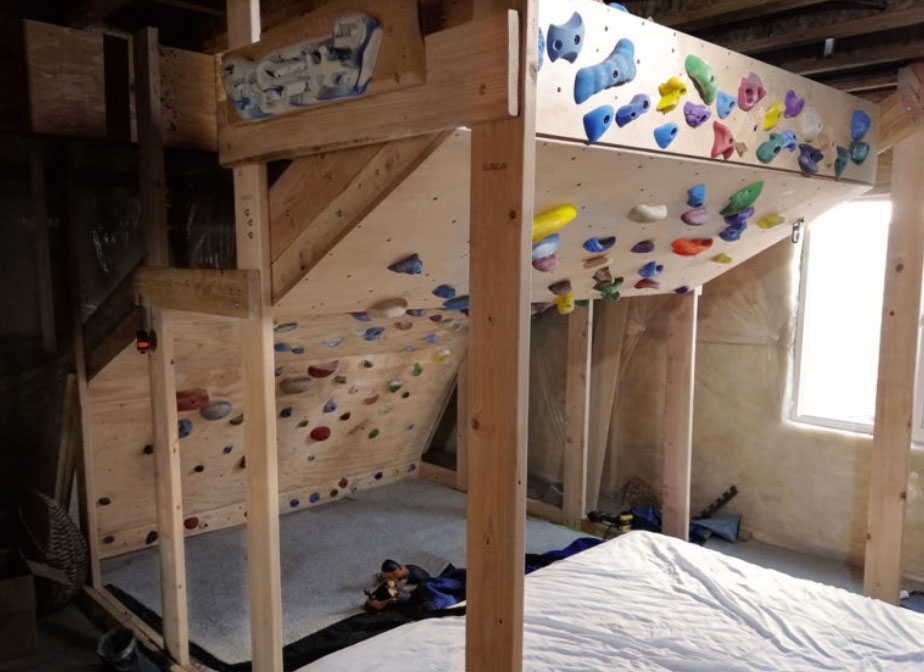
So you’ve decided to install your own home climbing wall. Awesome! In this article we’ll talk about some of the first planning steps you should take before grabbing your drill and cutting wood. And don’t miss our previous articles about common mistakes and tips for new homewallers. Do your research ahead of time and your wall will provide endless enjoyment.
First ask yourself: Do you need a full homewall? It’s a commitment of space, time and funds to install even the most modest of homewalls. Kenny Matys says, “Consider the costs and possible locations when deciding if you should build a wall, install a hangboard, or hang some pull-up devices.” Smaller options can simulate climbing and get you strong at a fraction of the effort and cost of a full wall.
Don’t forget the legal side. Installing a climbing wall may require permission from your landlord, or even a permit from your local municipality. You also should check with your insurance carrier. Many homewallers now ask visiting climbers to sign a liability waiver. For all of these aspects we recommend “asking permission” instead of “asking forgiveness”, since the potential cost of a mistake here could be pretty high.
The first steps towards building your new home climbing wall are a combination of three factors: goals, space, and structure.

Begin with your goals
Your goals will drive all aspects of the design. Take a few moments to consider all the benefits you want from your wall, both for yourself and anyone else who will be using it. Below are the two main reasons that people install a homewall.
To get strong and improve skills. But this isn’t a specific enough goal, you need to go further: Are you working to build power? Endurance? If several people will be using the wall, what are their current climbing abilities? Are you training for particular styles or angles that are present at your local crags and boulders? Your answers to these questions will affect your design decisions, as well as hold selection and routesetting.
To have fun with your family. Generally this goal will mean your wall is less steep to accommodate a wide variety of climbers, but be careful about making it too easy. Any frequent users of the wall will progress quickly. Slabs and vertical walls can get boring fast.

Evaluate your space
This may not be a concern if you have a huge empty temperature-controlled garage, but most new homewallers have space limitations. If you have several options, then weigh them all carefully.
Being comfortable while climbing will encourage you to use the wall more. You may have a lot of space in a backyard, but if you live somewhere where summer or winter is unbearable, it will limit your use and enjoyment of the wall. Louie Anderson reminds you to ask yourself: ”Is there good lighting, ventilation, power outlets, and will the space be ready to use at all times, or is there set-up required to use it each time you climb?”
A small space does not necessarily eliminate potential for a home climbing wall. Jackie Hueftle notes, “There are options for width and height to fit in narrow spaces or under low ceilings.” You can find designs that are both manufactured professionally and also do-it-yourself frames.
Be mindful of obstacles since this affects both safety and enjoyment. If you are kicking a wall every time you dyno and swing, will that provide the experience you’re looking for? Safe landing zones always extend out from the top and sides of the wall, and will be free of hard objects. You don’t want to hit your head on the corner of that bench or table.

Make it solid and strong
The available space also determines the structural support you will need. Your situation may require a totally free-standing wall with independent supports, or you may have easy-to-access studs for your framing. There are a myriad of creative ways to design your structure, a good source for this research is the Home Climbing Wall Forum.
Ask for help or a second opinion to make sure you are not missing anything when planning your build. Someone experienced at carpentry or home building may point out aspects you had not considered. Not all structures in your home, garage or shed can handle the odd forces that come with installing and climbing on homewalls. The last thing you want is to damage the integrity of your ceiling or floor.
If in doubt, use thicker supports. This may mean upgrading from 2” x 6” to 2” x 8” framing studs or using ½” bolts or chain instead of ⅜”. Scott Rennak says, “With typical overhanging climbing walls, 2” x 4” for major frame components and ¼” hardware for anchoring are not sufficient; this is not the place to be thrifty.” The small extra cost of thicker materials far outweighs the risk of structural damage or failure.

Homewaller FAQ Team
We are fortunate to have the combined knowledge and experience of Louie Anderson (Legacy Ascension, Setter Showdown), Jackie Hueftle (Kilter Grips, Routesetting Institute), Kenny Matys (Atomik Holds) and Scott Rennak (CBJ, Reach Climbers). All four answer and review every question together.

Scott has been promoting indoor climbing since 1997 when he bought Climb Time of Cincinnati and started what would become the American Bouldering Series. Since then he has helped hundreds of small businesses grow including climbing gyms and manufacturers. Scott is the owner and publisher of CBJ, and is available for projects through Reach Climbers. In his free time he still scours nearby hills for fresh boulders, skis all year, and is a dedicated father.









